Flower Glossary is reader-supported. When you buy through links on our site, we may earn an affiliate commission.
We think that orchids are some of the most beautiful flowers out there. Use our orchid guide to find 20 types ranging from dendrobium orchids to more exotic varieties.
Table of Contents
Bletilla Striata (Hardy Orchid)
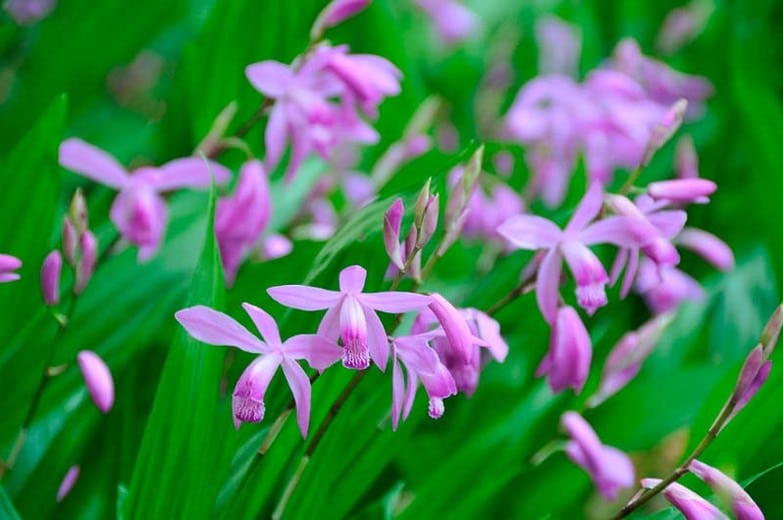
Photo Source: Gardenia.net20striata-Hardy-Orchid
Hardy orchids produce small pinkish-purple flowers in stunning racemes of up to 12 blooms.
- They grow up to 12-18 inches high and 6-12 inches wide
- Plant in spring
- Grow best in partial shade
- Plant these 4 inches apart and around 2-3 inches deep
Cymbidium Orchid
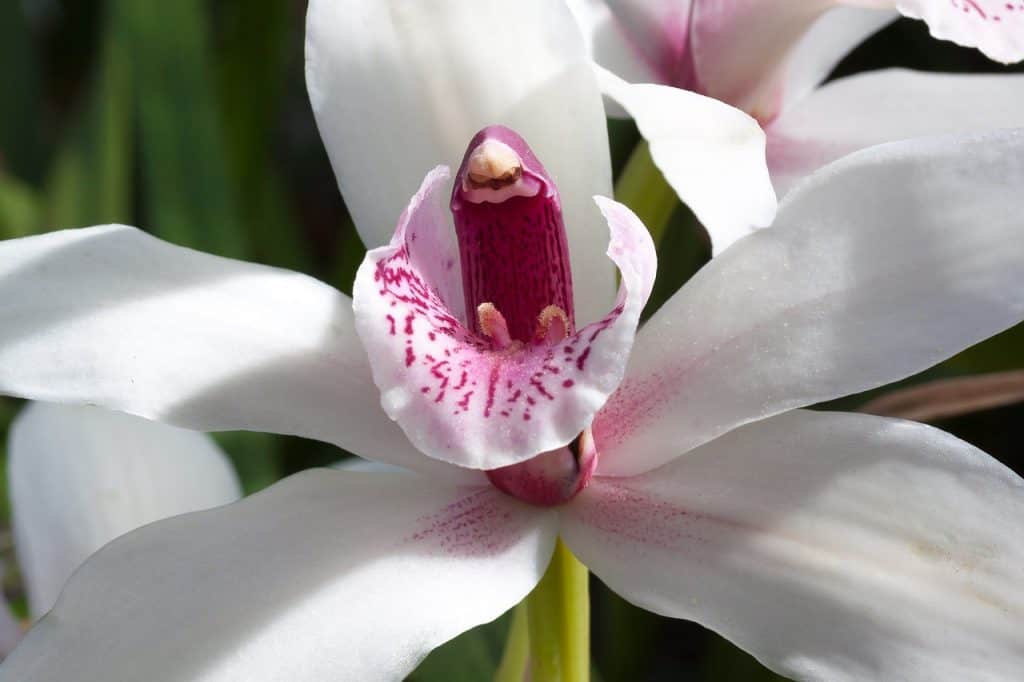
Cymbidium Orchids are commonly used in corsages. They are also known as “boat orchids.” They are popular since they can grow in cooler, drier conditions. These flowers grow in various colors, including white or a yellowish- green with hints of deep reds.
- Grow best with medium to bright light but grow best in partial shade
- Water them in the morning so they have time to dry before the colder weather in the evening
Dendrobium Orchids
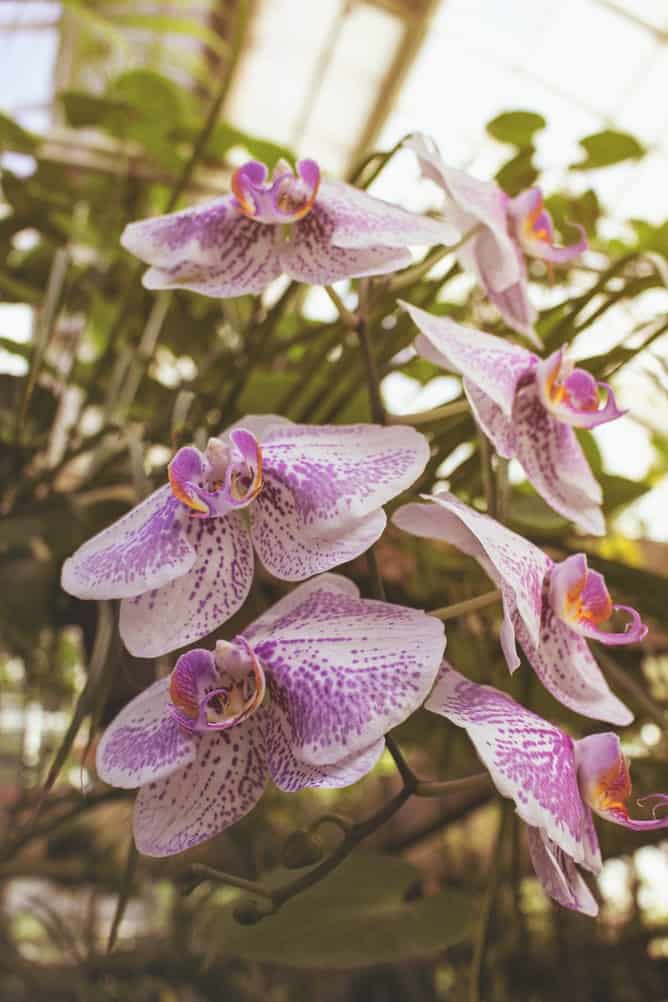
The Dendrobium orchid is one of the easiest orchid varieties to grow. It makes for the perfect house plant or a beautiful addition to any garden.
- Plant in a bright spot
- Have medium water needs
- You can repot your orchid when the bark or moss its growing starts to break down
Anthurium
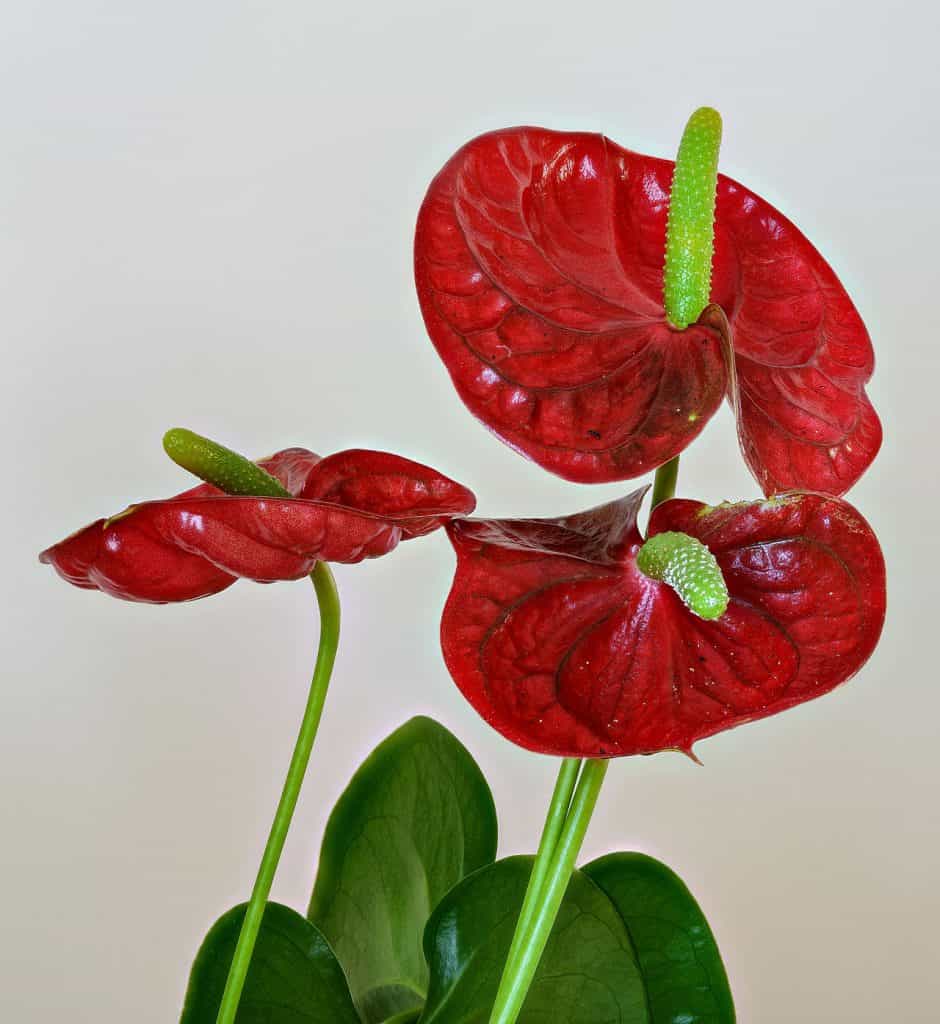
Photo Source: Wikipedia
Anthuriums are a beautiful flower that can grow indoors or outdoors. They have a distinct shape and are truly a remarkable sight of beauty.
- Need bright to indirect light
- They do best with warm temperatures (70-90 degrees)
- Grow best indoors
Phalaenopsis Orchid
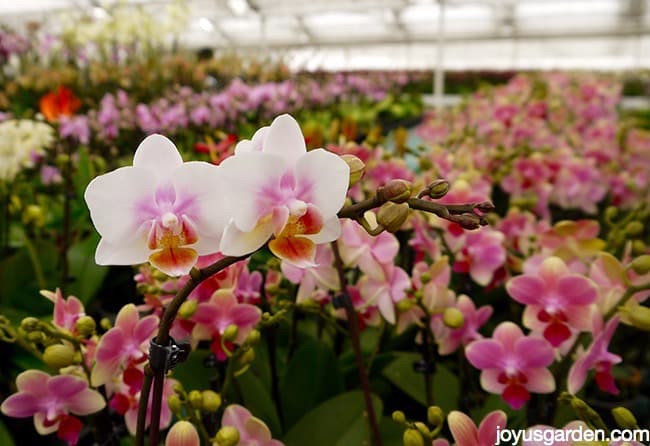
Photo Source: Joyus Garden
Phalaenopsis are also known as the Moth Orchid. This beautiful type of orchid is often seen in hotels, offices, spas, restaurants, and similar locations.
- They need medium to bright light but no direct sunlight
- During the daytime, they do best in 68-85 degree weather
- They can handle a little bit closer at night but the temperature needs to remain steady while in bloom. Colder/drafty areas can cause these flower buds to fall off
- Water them once a week and don’t leave them left to stand in water
Cattleya
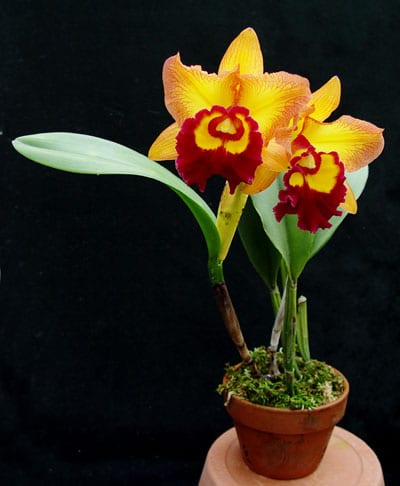
Photo Source: Orchid Web
The Cattleyas are a magnificent sight. They produce large and fragrant flowers with vibrant colors. Cattleya orchids are often used in corsages.
- They need sun in the morning time and it can be direct. In the afternoon they should be in the shade.
- During the day they do best in milder temperatures preferably under 85 degrees.
- At night they should be in cooler environments
Vanda
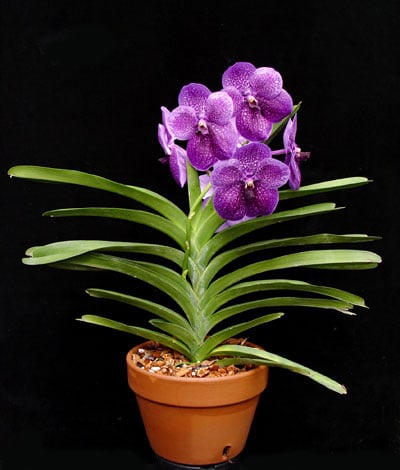
Photo Source: https://www.orchidweb.com/vanda-orchid-care
Vanda orchids produce some of the most beautiful blooms you will ever see. These plants are native to the tropics of Asia and hang from trees.
- They need sun in the morning time and it can be direct. In the afternoon they should be in the shade.
- During the day they do best in milder temperatures preferably under 85 degrees.
- At night they should be in cooler environments
Paphiopedilum
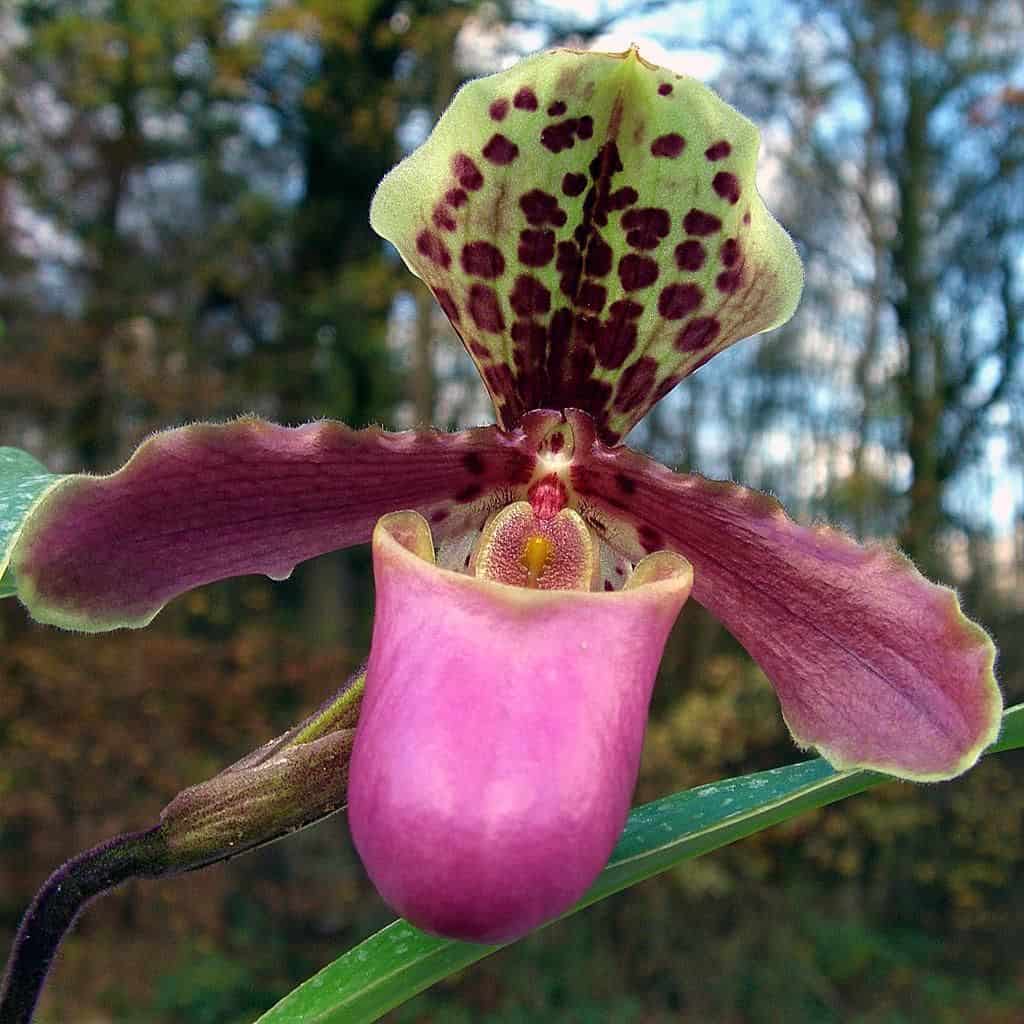
Photo Source: https://en.wikipedia.org/wiki/Paphiopedilum
The Paphiopedilum is also known as the Venus slipper. It originates from countries in the Far East like Indonesia. They grow in humus and other material on the forest floors. In addition, this type of orchid can grow on trees and on cliffs in the pockets of humus.
- Need low light
- With mottled leaves, the temperature needs to be between 60 to 80 degrees
- Without mottled leaves, they can endure weather as low as 50 degrees
- Water every 5 days
Oncidium
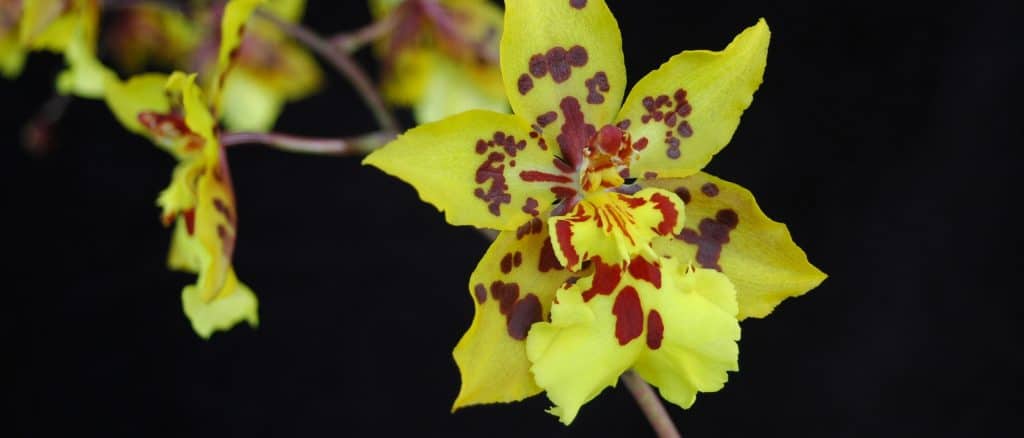
Photo Source: Smithsonian Gardens
The Oncidium orchid can be a little trickier to care for than other orchids. They must have abundant light and definite dry periods between waterings. Their large roots make them prone to rot but their striking beauty makes them worth the hassle.
- Should be in the morning sun and it can be direct sunlight
- Need afternoon shade
- Can withstand temperatures between 55 and 85 degrees
- They can tolerate more heat if there is enough air movement
- Rather than watering on a weekly schedule, you should physically check the plant. Refrain from watering until the potting mix is dry halfway through. Check water levels by pushing a popsicle stick or bamboo skewer into the mix and checking the end to see if it’s wet or not.
Miltoniopsis Orchid
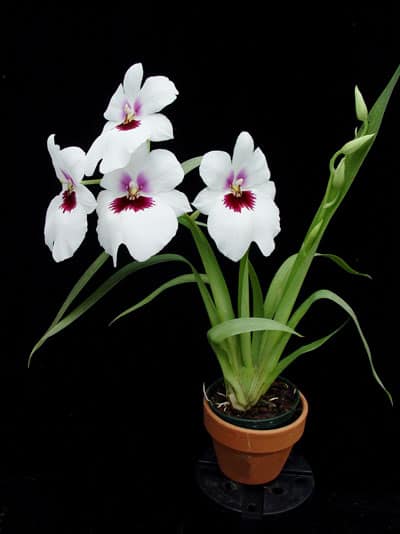
Photo Source: Orchid Web
The Miltoniopsis are cool-growing orchids that were first found in the high Andes. They grow in Colombia, Panama, and Ecuador.
- They need bright but indirect light
- During the day the do best in mild temperatures below 85 degrees
- At night they can tolerate slightly cooler temperatures
- Grow yearly
- Need frequent watering (once a week during winter and twice during the summer)
Odontoglossum
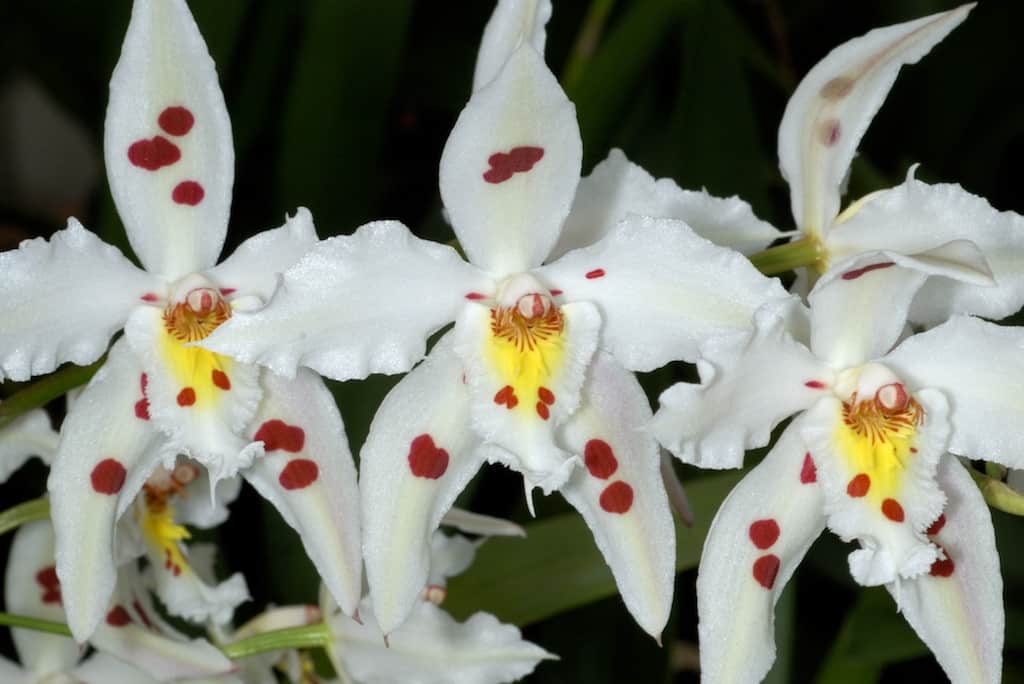
Photo Source: Wikipedia
The Odontoglossum came from the Greek words Odon (tooth) and Glossa (tongue). It was named in 1816 by Karl Sigismund Kunth. The name was given to it due to its two tooth-like calluses on the base of the lip.
- Grows best in filtered to low light
- During the day it does best in mild temperatures between 75-85 degrees
- You should allow the plant to dry between waterings
- Make sure you water it more often while it is growing
Vuylstekeara
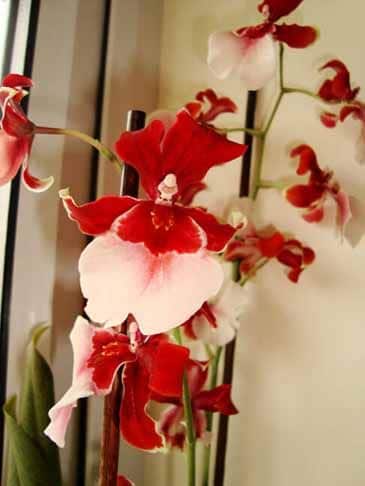
Photo Source: Our House Plants
The Vuylstekeara differs from other types of orchids because unlike others it does not grow naturally in the wild. It was actually created in a lab in 1911 by Charles Vuylsteke.
This flower is also known as a Cambria Orchid. It is an intergeneric hybrid of other Orchid plants. This is an uncommon flower commercially so you may have difficulty finding it.
- It grows best in filtered to low light
- During the day it does best between 75 and 85 degrees
- Allow the plant to dry between waterings
- You should water it more while the plant is growing
Zygopetalum Orchid
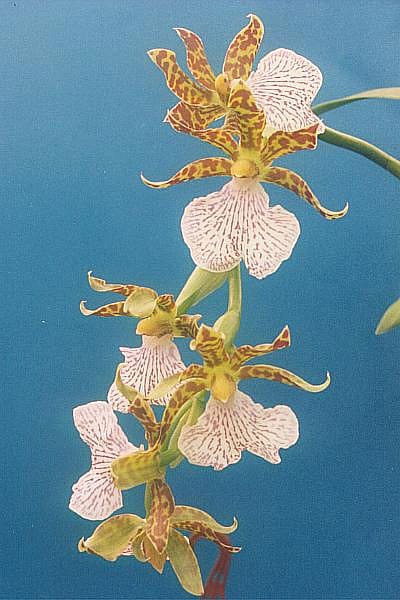
Photo Source: Wikipedia
The Zygopetalums name comes from the Greek word zygon which means “yolked petal.” This plant has a yoke-like growth at the base of the lip caused by the fusion of the sepals and petals.
- It grows best in morning and afternoon sun as well as midday shade
- Grow best in the summer heat and cooler winters as long as the plant is climatized
- Once the plant spikes or flowers you should protect it from any temperature below 35 degrees
- Water every 7-10 days
Ludisia
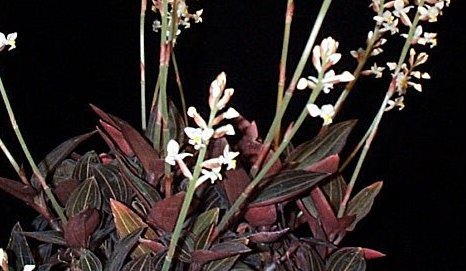
Photo Source: https://en.wikipedia.org/wiki/Ludisia
The Ludisia is native to southern China, Vietnam, Philippines, Thailand, Malaysia, Indonesia, and Burma. It’s also known as the jewel orchid. They are terrestrial orchids that grow on the forest floor. Ludisia are best known for their foliage which is usually a velvety deep maroon with red veins that run parallel to the center of their leaves.
- Need filtered indirect light
- Can withstand temperatures between 55 and 85 degrees
- Do not expose to temperatures below 50 degrees
- These plants prefer a slightly damp condition
- Don’t let it dry out between waterings
Phaius Orchid
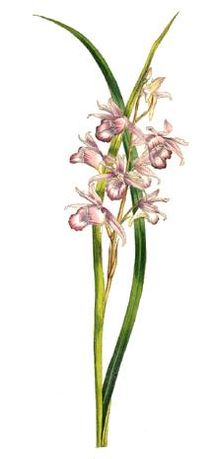
Photo Source: https://en.wikipedia.org/wiki/Phaius
The Phaius, also known as swamp orchids, is an evergreen, terrestrial herb. They form clumps of crowded stem-like pseudobulbs with pleated leaves and colorful flowers.
- Grow best in bright and indirect light
- During the day they should stay in temperatures between 75 and 85 degrees
- At night they can withstand slightly cooler temperatures
- They do best in slightly damp conditions and should not dry out between waterings
Phragmipedium
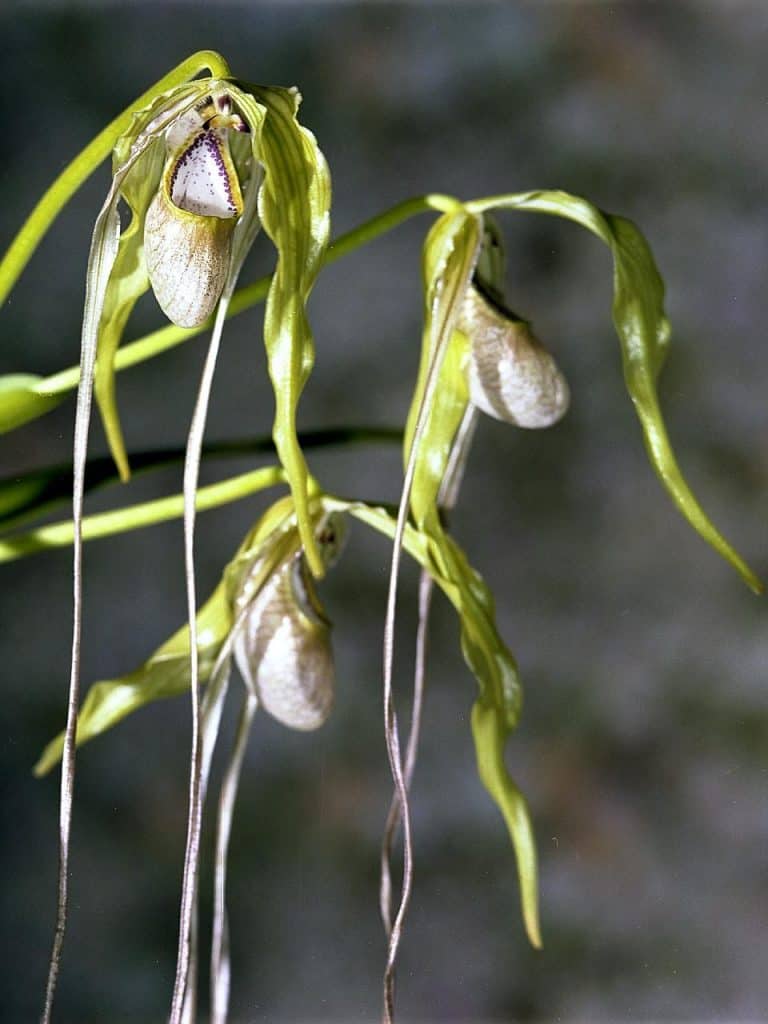
Photo Source: https://en.wikipedia.org/wiki/Phragmipedium
The name Phragmipedium comes from the Greek word phragma which means “division” and pedium which means “slipper.” This type of orchid comes from SW Mexico as well as Central and tropical South America.
- Grow best in bright and indirect light
- During the day they do best in mild temperatures between 75 and 85 degrees
- At night they can withstand cooler temperatures
- They prefer damp conditions
Brassavola
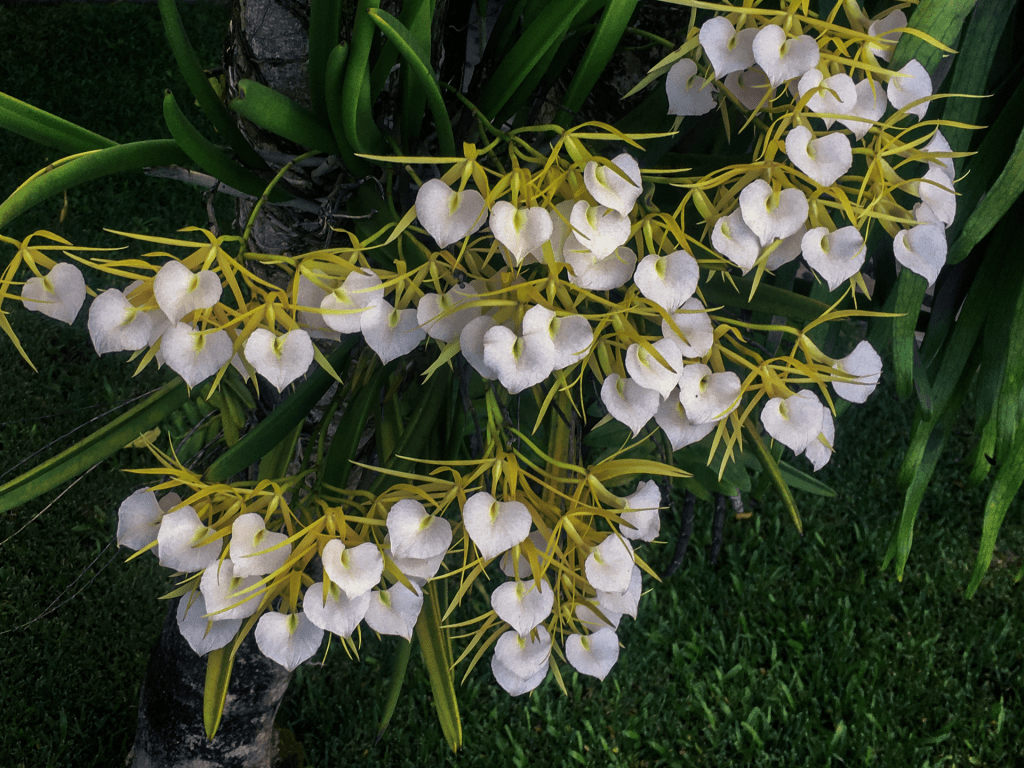
Photo Source: https://en.wikipedia.org/wiki/Brassavola
The Brassavola was named in 1813 by Scottish botanist Robert Brown. The name came from the Italian nobleman and physician Antonio Musa Brassavola. They are widespread throughout Mexico, Central America, the West Indies and South America. This orchid yields a single white or greenish-white flower, or a raceme of a few flowers.
- Grow best in bright to indirect light
- Bloom best in temperatures between 65 and 85 degrees
- Water often during their growing season
- They should remain slightly dry after flowering
Cycnoches
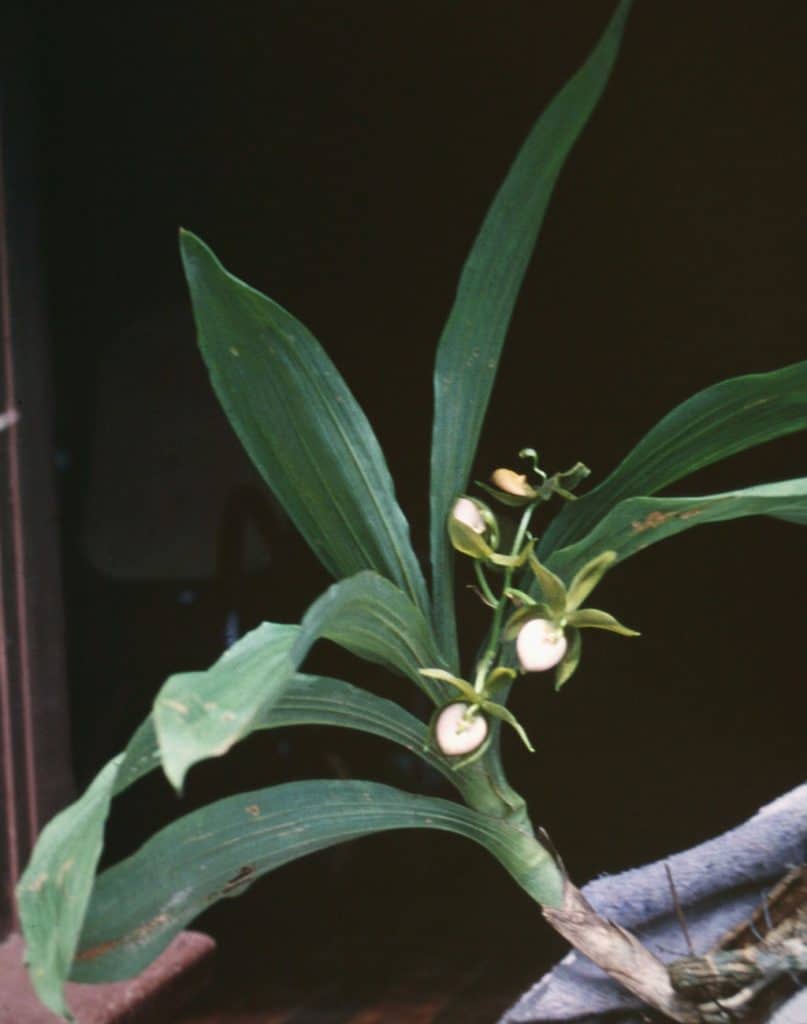
Photo Source: https://en.wikipedia.org/wiki/Cycnoches
The Cycnoches abbreviated as Cyc. is native to South America and Central America as well as southern Mexico.
- Best in bright and diffused light
- Grows best in 75 to 80 degrees during the day
- At night they can withstand temperatures of 60-65 degrees
- Grow throughout the year and need more frequent watering
- Water once a week during the winter and twice a week during the summer
Catasetum
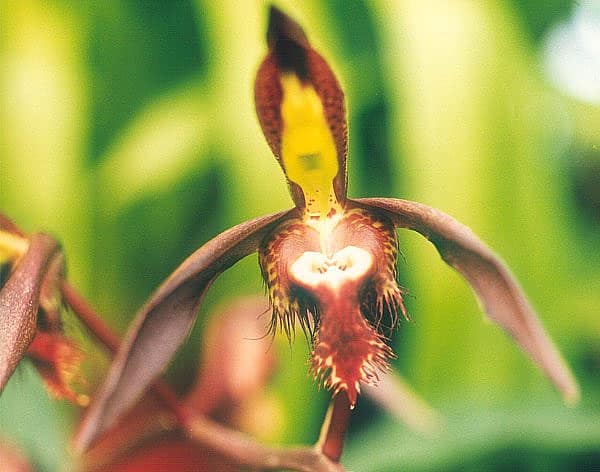
Photo Source: https://en.wikipedia.org/wiki/Catasetum
Catasetum grows from Mexico to Argentina. They have thick, cigar-shaped pseudobulbs which are in clusters. The leaves are pleated in the upper part.
- Grow best in bright light
- Catasetum are native to hot tropical areas and grow best in warmer climates
- They should be in 80-100 degree weather during the day
- During the night they can withstand temperatures between 60-65 degrees
- Water weekly when you see new leaves forming and gradually reduce watering once growth stops
Epidendrum
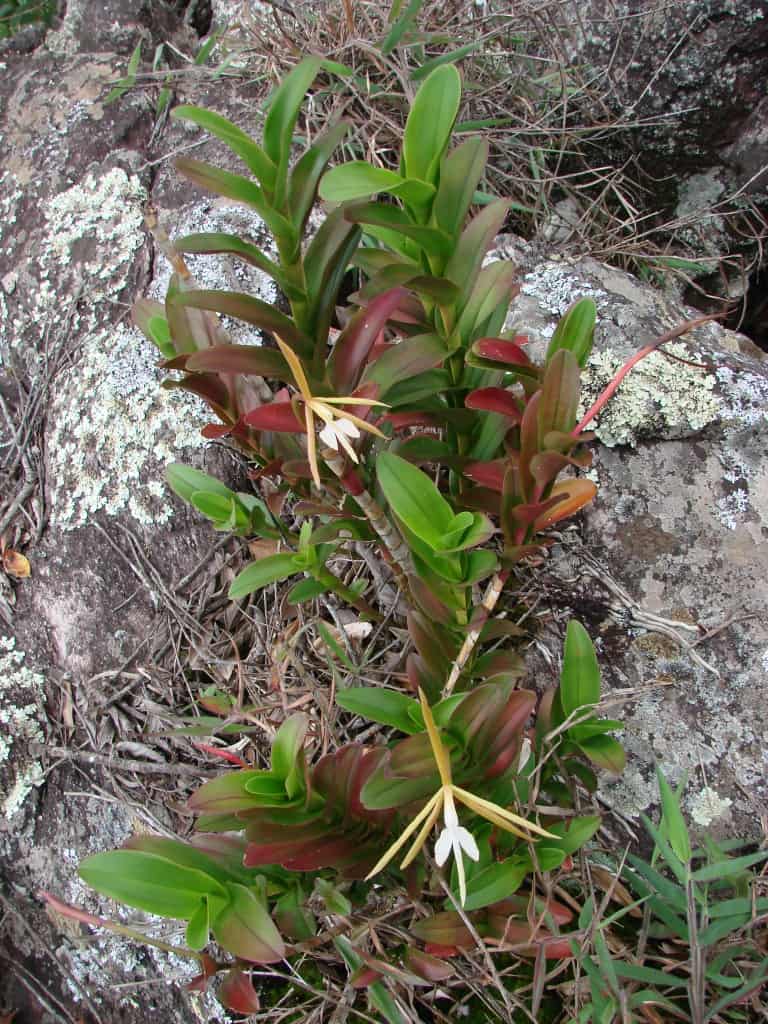
Photo Source: https://en.wikipedia.org/wiki/Epidendrum
The Epidendrum are native to the tropics and subtropical regions of the American Continents. They grow in places from North Carolina to Argentina.
- Best in medium to bright indirect light
- Grow best in 60-90 degree weather during the day
- During the night they can withstand temperatures between 50 and 70 degrees
- They need frequent watering
- Water every 4-5 days during the warmer months and once a week during cooler months
Enjoy our post about types of orchids and want to keep reading? Check out our guide to caring for orchids or our post on 100+ types of flowers
If you want to send orchids to someone, you can find them at stores like From You Flowers, 1800flowers, Teleflora, Proflowers, FTD, and the Bouqs. Need advice on which store to shop from? Check out our post about top flower stores online.
